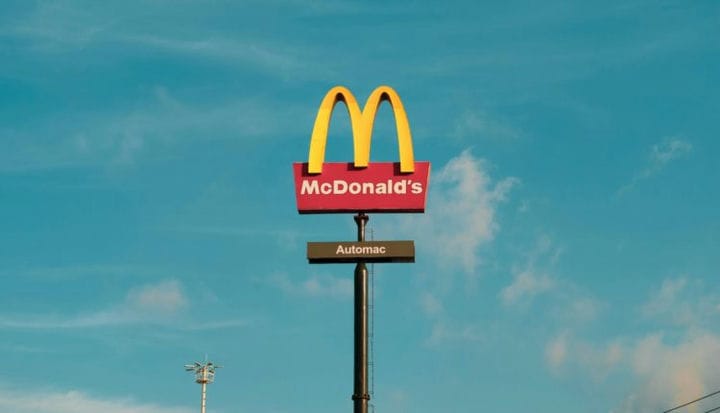Success stories of great companies
Why does one business grow and bring in money, while another closes after a year? Is there a universal recipe for a profitable business, is it possible to achieve something without capital? Is it possible to make a million out of 10,000 🪙? We tell the success stories of many great and foreign companies.
McDonald’s success story
The Great Depression in the USA: crisis, unemployment, low wages… And two young brothers who left for the West in search of their profitable business. Richard and Maurice McDonald, better known as Dick and Mac, become pioneers in the fast food chain business.
They noticed that the popularity of cars is growing, and saved drivers from having to leave the car to order something. In 1940, in California, they open the first cafe. They came up with not just a business, but a new organization of labor. The brothers clearly distributed the actions among the employees. One, for example, fried meat, the second prepared sauces, the third whipped cocktails, etc.
Perhaps over time, the cafe would have remained an ordinary point on the map, if not for the businessman Ray Kroc: he bought a franchise from the brothers and began to act as a franchise agent.
Ray Kroc developed the code, logo, thought out the marketing strategy, and initially paid for the company for $2.7 million. Then he was on the verge of bankruptcy, and the banks did not want to give a loan. Ray found a way out: he bought land and leased it to new franchise owners. So his business was not fast food, but real estate.
Having bought the business in 1961, in 4 years he increased the number of cafes to 700. Today, about 70 million people visit McDonald’s, there are more than 35,000 cafes in 118 countries.
Apple success story
In California, in 1976, Steve Jobs, Ronald Wayne and Steve Wozniak founded Apple. Wayne, however, refused to participate even before the official registration. Trying to make personal computers more accessible, associates spent hours in the garage. They released the Apple I, a motherboard with a processor that sold for $666. The case and keyboard had to be added on their own, but despite this, the entire batch was sold. Then they decided to make an Apple II with graphics, sound, power supply, speakers packed in a plastic case.
In 1981, Wozniak left the company, and President John Scully became its president. Enters the Macintosh PC market, the demand for which immediately exceeds the supply. At the time, Apple represented freedom. Employees could afford even ripped jeans, even music in the workplace, as long as they worked on a PC. John Scully, however, does not like it – he fires Steve Jobs.
Jobs creates NeXT and builds computers for the education industry. Meanwhile, Apple is feverishly creating Macs, printers, digital cameras, and so on. At the same time, Apple sales are declining, and in 1997, under pressure from investors, Jobs is returned to the corporation. Already in his role as president, he reduces the range and creates iMac and MacOS X. Then there are iPods, iPads and other products that break sales records every time.
Steve Jobs repackaged what had already been created before, and it was exactly what others wanted. He created a unique web design, combined the functionality: phone, player, notepad, camera, etc.
Wildberry success story
Tatyana Bakalchuk, the founder of Wildberries, has become the second female billionaire in recent times. Her company, which began as a family business, is now worth about $1.2 billion.
The history of Wildberries began in 2004. At first, Tatyana sold things from German catalogs: she looked for orders, made purchases and delivered clothes. Over time, Tatyana Bakalchuk connected new directions: she began to bring children’s goods, books, equipment, etc.
After 4 years, the girl buys unsold goods from global brands such as Sportmaster and sells them quickly enough. In 2014, when the ruble depreciates, it attracts domestic producers. So it expands the range of products. The company begins to grow rapidly during the pandemic, when most of the people were forced to shop online. For example, the number of app users increased by 20%, and the company’s revenue almost doubled.
At the start, Wildberries had no competitors, and later the founder tracked trends and changed the strategy and assortment. One of the main reasons for the success was that Tatyana Bakalchuk was able to create a global partner network and made a service convenient for customers.
Tinkoff success story
Until 2006, Tinkoff Bank did not exist, but there was Khimmashbank, which had been lending to chemical industry enterprises for 12 years. Things began to deteriorate for him. In the spring, the current billionaire Oleg Tinkov bought it out and started reforms and rebranding. Having spent about 70 million dollars on the project, Oleg Tinkov achieved an increase in assets.
By the end of 2006, Tinkoff issues its own cards and decides that the organization will not have branches and offices. In 2011, he creates online banking, which allows you to receive services anywhere in the world where there is Internet. In 2015 and beyond, it provides business services and integrates the app with Samsung, Apple and Android Pay.
He managed to cover the entire current one because he focused on the development of electronic systems. Through the application, you can pay, open an account, buy movie tickets or promotions.
Tesla success story
Electric cars appeared already in 1901, then they were 38% of the total. Then they gain popularity, and Helen, the wife of William Howard Taft, the 27th President of the United States, makes them fashionable.
In 1908, however, the trend disappears. Ford releases a low-cost car with a simplified design and a Ford Model T gasoline engine, and it causes a stir. By the 1930s, as fuel became cheaper, electric cars had all but disappeared.
They are remembered again in the 2000s. Engineers Martin Eberhard and Mark Tarpenning have already sold one successful startup – they produced e-books. Thinking about a new niche, Eberhard turned his attention to electric vehicles and became part of the AC Propulsion team. There he made a mass-produced electric car from a luxury electric car. The solution was to replace the battery with lithium-ion batteries.
In 2003, Eberhard and Tarpenning founded Tesla. They received $7.5 million from investors, with Elon Musk contributing 90% of the amount. Tesla’s main idea is to make electric vehicles mainstream.
In 2007, Elon Musk takes full control of the company. He raises additional investment and releases The Roadster. The car accelerated to 100 km. per hour in 3.6 seconds and could do 350 km. without recharging. It is the world’s first all-electric affordable car.
After 2 years, the second Tesla prototype appeared, and it was put into production in 2012. This model can travel 426 kilometers without recharging, and it becomes infected in just half an hour. In 3.1 seconds, the car accelerates to 100 kilometers per hour in 3.1 seconds. Five years later, the first economical version appears for $35,000.

